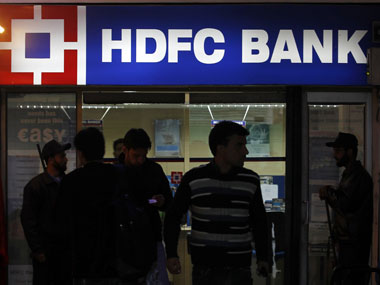HDFC Bank reported a record 37th quarter of over 30 percent net profit growth. It is the 10th quarter in a row that the bank has managed to maintain the net profit growth between 30-34 percent. The net interest margin, which is the difference between the bank’s cost of funds and the bank’s lending rate, stands at 4.2% for the quarter ended June 2011 as always.
If one looks at the financial performance of any other bank, it varies with the external environment. HDFC Bank clocked an average 30%-plus annual quarterly profit growth irrespective of any situation. For example, most of the banks showed higher growth when the going was good or lower profit growth if things got difficult.During the last 20 quarters, Axis Bank reported a peak performance of 88% year-on-year net profit growth in June 2008. During the March 2011 quarter, the year-on-year growth was 33.4%.HDFC Bank never seems to have gone through such swings. Agreed that HDFC Bank has been voted as the strongest bank in Asia Pacific on various parameters by the Asian Banker magazine.
[caption id=“attachment_44098” align=“alignleft” width=“380” caption=“HDFC Bank reported a record 37th quarter of over 30 percent net profit growth. Reuters.”]  [/caption]
However, how is the bank’s management able to hit the same profit growth mark quarter after quarter?
It is perhaps possible that the bank is working backwards.It has set itself a target of reporting a profit growth between 30-34%. “The bank management asks high performers to slow down in good times and low performers to do better in bad times. This helps them manage income,” a sector analyst pointed out.
A foreign institutional investor is not really concerned. He believes that HDFC Bank is the most efficiently managed bank and does well on quality parameters like return on equity, assets, higher fee-based income than interest-based, better ratio of current account to savings account.
Impact Shorts
More ShortsThis is perhaps the reason why the bank has capital adequacy that is higher than what is mandated or loan loss provisions that are higher than the minimum regulatory requirements.
Analysts also say that the bank has one of the highest (current to savings accounts) CASA (current account, savings account) mix, high and stable margins, high return on equity, clean assets and a large share of fee-income to its total income. Hence, it deserves the valuation premium that it gets in the stock market.
Analysts continue to give an ‘accumulate’ or ‘buy’ rating since the bank has set a steady course for profit growth. At current prices, HDFC Bank is trading at 23 times March 2012 earnings per share. The sector average is around 11.
Does this mean that if you are an efficiently managed bank, you could really control and manage your accounts well? That’s a secret only HDFC Bank’s accountants can tell you.
A comparative look at the Net Profits of HDFC, ICICI and Axis Bank from March 2003 to March 2011


)

)
)
)
)
)
)
)
)



